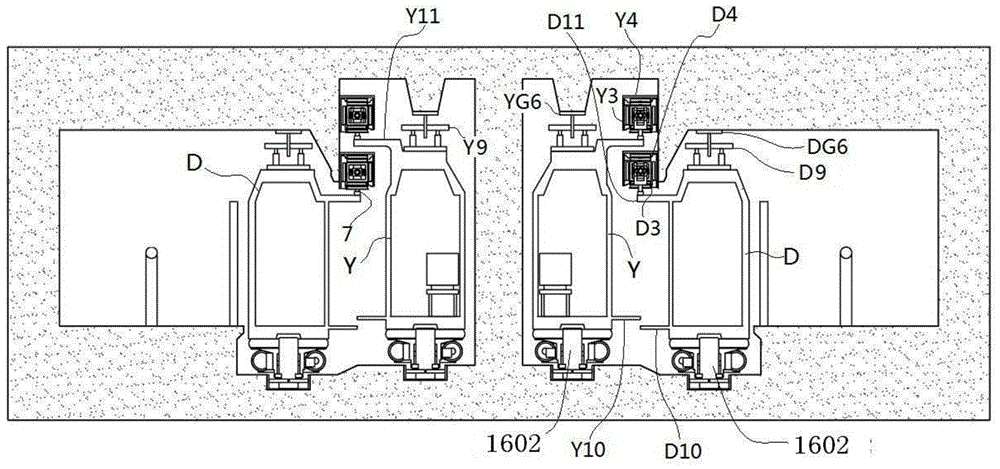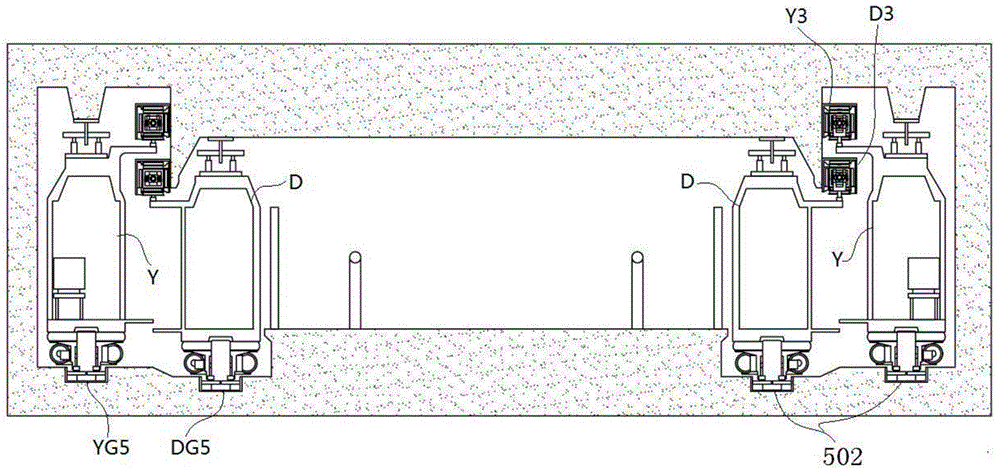Parallel speed rail train and its carrying method
A rail train, parallel technology, applied in the field of urban public passenger rail transit, can solve the problems of waste, asynchronous grant and receipt time, and low upper limit of subway speed per hour, etc.
- Summary
- Abstract
- Description
- Claims
- Application Information
AI Technical Summary
Problems solved by technology
Method used
Image
Examples
Embodiment Construction
[0102] The parallel progressive running rail train of the present invention uses electric energy as driving energy, and is composed of several train sections in which a carriage carrying passengers runs on a fixed track through a bogie. Different from traditional rail trains, parallel rail trains are on a round-trip two-way passenger line. The passenger-carrying combination is formed by the co-directional and parallel combination of the express train D and the running train Y; the express train D where the express train is located. The high-speed rail line DG and the running rail line YG where the running train Y is located respectively make a curved turn at both ends of the passenger line to form an inner and outer round-trip closed track line, such as figure 1 shown; the speed-transfer track line DG and the running track line YG are divided into a speed-transfer section and a turning section at both ends. It can be connected in parallel, and the passengers on the two trains ...
PUM
 Login to View More
Login to View More Abstract
Description
Claims
Application Information
 Login to View More
Login to View More - R&D
- Intellectual Property
- Life Sciences
- Materials
- Tech Scout
- Unparalleled Data Quality
- Higher Quality Content
- 60% Fewer Hallucinations
Browse by: Latest US Patents, China's latest patents, Technical Efficacy Thesaurus, Application Domain, Technology Topic, Popular Technical Reports.
© 2025 PatSnap. All rights reserved.Legal|Privacy policy|Modern Slavery Act Transparency Statement|Sitemap|About US| Contact US: help@patsnap.com



